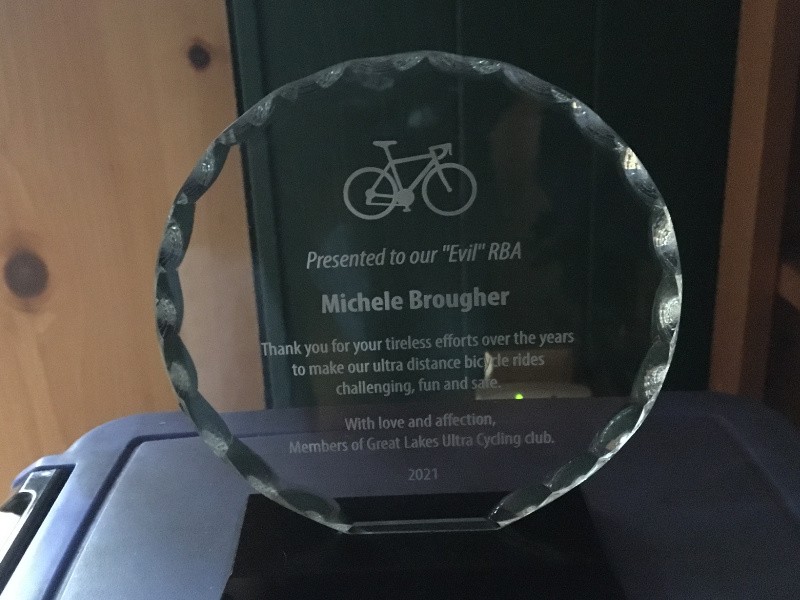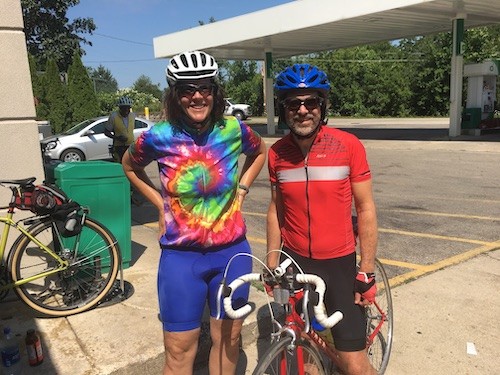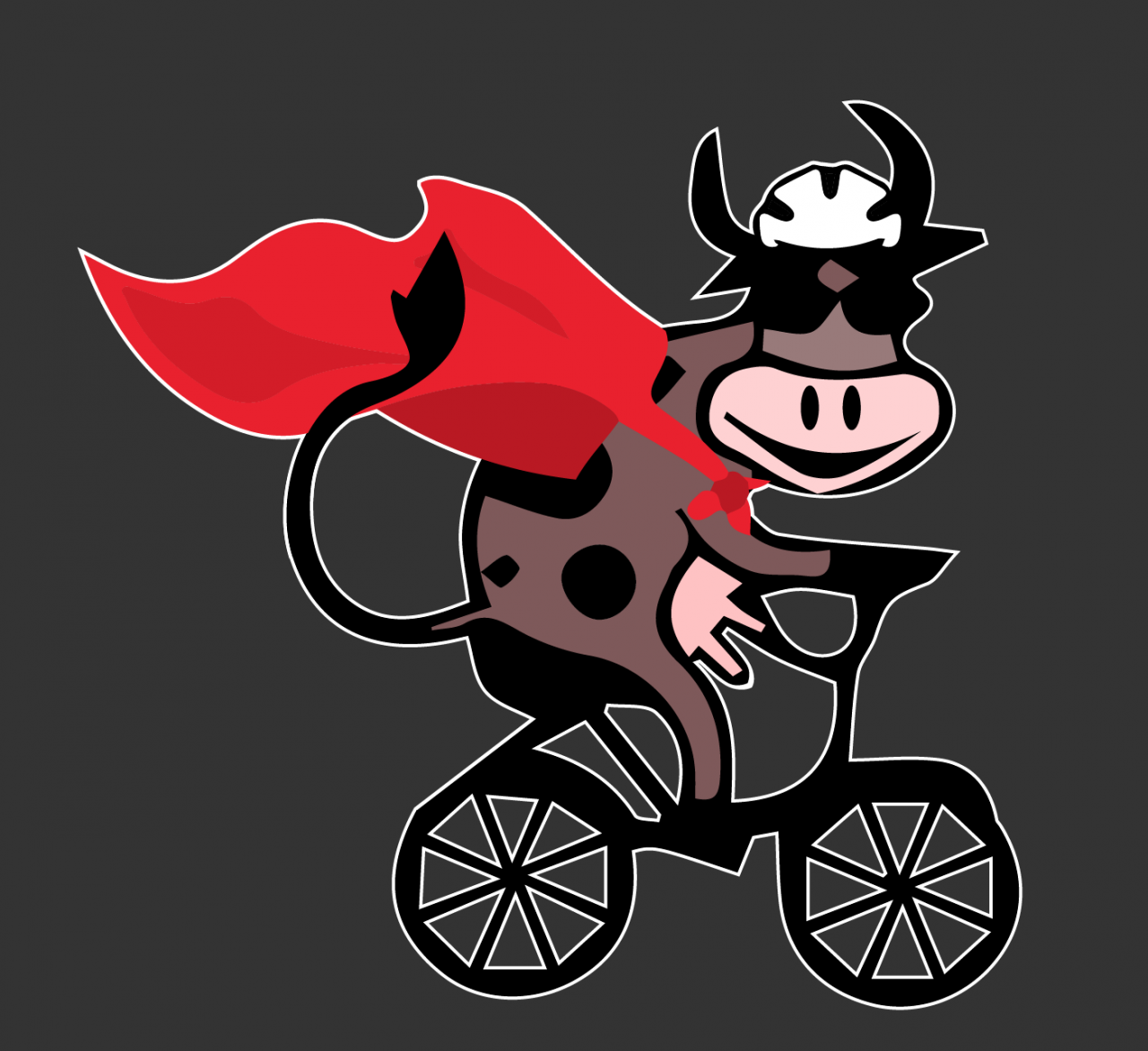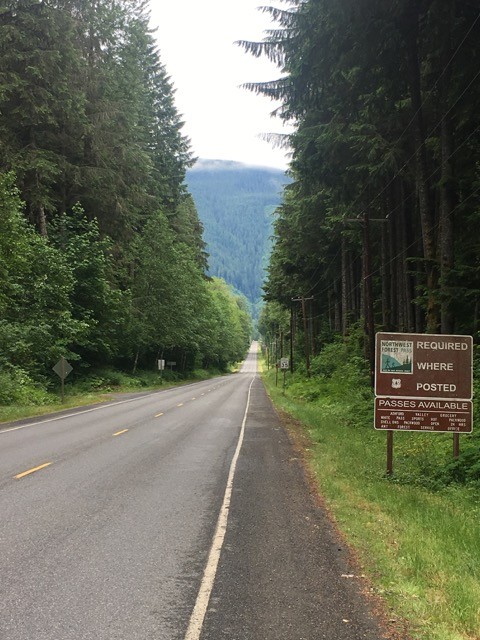There is no issue more talked about in cycling than this one (and we all know what it is). I set two challenges to myself. The first is informative, to describe the various problems and strategies associated with this most tender of parts and the second is linguistic, to never use the same euphemism twice.
There are serveral categories of posterior agony that I have experienced over my long history. The first I had to deal with hits most cyclists every spring when one has not been on a bike for a number of months or when they extend saddle time well over what they are used to. It's that dreaded feeling that instead of riding, you must certainly have been instead locked in a room with 1000 tiny gnomes beating on your pelvis with cold-iron hammers: the spring-ache, the gluteal impaction, the oh-my-god-my-*@#-is -killing-me sensation. Despite that fact that you can have many issues that are more serious, this one will almost certainly keep you off your bike if you let it. This particular issue kept IronK off a bike for almost 2 years. The second is the dreaded saddle sore or even worse an outbreak of them that will bring back any memories you might have of your days with diaper rash.
Spring-ache, for me, is generally the result of either being out-of-shape (after the winter) or from doing a ride that is more than about 25% longer than I am used to. My first and, in my humble opinion, the best way to minimize the issue in the spring time is to not quit riding in the fall. This doesn't mean to hammer your brains out all winter. It just means that you either leverage not so bad weather and learn to ride in sub-par conditions like cold or rain for brief periods of time or you ride indoors. Even if it is once a week, your derriere will thank you for it when spring comes and you are dying to pedal off into the great blue yonder. Base training in the winter will also help the rest of your body. In particular, I have found that core strength is almost as close to silver bullet as you can find for a variety of problems. You abdominal muscles are the ones that stabilize you on the bike, if they are very strong, you ride faster and more comfortably on both ends. Stability ball exercises, push ups, and planks of all shapes are really worthwhile in the off-season. If I did nothing else all winter, I'd do them.
Saying that you solve the out-of-shape problem, the next fact is that when it comes to brass tacks, the points at which your body comes in contact with the bicycle are the most common places to have problems. The sweet cheeks are the contact point with perhaps the highest amount of continuous weight applied while riding. There are forces of friction to deal with as well as the fact that it's a tender spot; you can run around barefoot on rough ground easily, imagine using even fine-grained sand paper for TP and you get the picture.
For me, getting the right saddle and getting it fit correctly were two processes that took a long time, but fixed the probelm.
Finding a saddle for riding mega-miles is both time consuming and can be expensive. I had the same saddle that came with my bike until I started riding over 80 miles. Up until that point (about 5-6 hours of riding), I could put up with just about anything. I've heard it said that any mistakes in fitting or equipment in the first 50 miles won't really come back to haunt you until about 150. I must have bought at least 4 saddles before settling into one I really liked for rides over 250 miles. When I say "really liked" it doesn't mean that I like sitting on it for fun either. Basically, there are 3 kinds of saddles:
The second really imporant part of the saddle is its position. You must have the fit perfect and be willing to change it over the course of a ride. What works at the start when you are fresh may need some adjustment after hours in the heat. First,the saddle must be the correct height. If it is too high, you will rock on it and the friction will become a problem. If it is too low, you will have added considerably to the already large weight on your glutes and wreck havoc on your knees. When the saddle is a perfect height for me, I feel as though I am suspended over the bike with each pedal stroke taking a little pressure off each side. I have also found through experimentation that I prefer a level saddle at the start, but at the end of about 200 miles, tilting the saddle just a tad downwards helps me to avoid rubbing when I am tired and my core isn't holding me in place as well.
One of my favorite tricks for ensuring that my saddle is in the right position during a long ride is to ask the person riding behind me to critique. After all, they have a far better view of your tokus than you do and millimeters count in the game of position. Also, pay attention to the knees, they are an early warning that something is wrong with the saddle. Too low and the fronts of my knees hurt, too high and the backs of my knees hurt. I have seen no less that 3 riders, including myself, completely fall apart because the saddle was millimeters too low. In almost every case, it's been due to slippage during a brevet or other really long ride. Rain, in particular, is very good at loosening connections on the bike. So is fresh chip-seal.
There are serveral categories of posterior agony that I have experienced over my long history. The first I had to deal with hits most cyclists every spring when one has not been on a bike for a number of months or when they extend saddle time well over what they are used to. It's that dreaded feeling that instead of riding, you must certainly have been instead locked in a room with 1000 tiny gnomes beating on your pelvis with cold-iron hammers: the spring-ache, the gluteal impaction, the oh-my-god-my-*@#-is -killing-me sensation. Despite that fact that you can have many issues that are more serious, this one will almost certainly keep you off your bike if you let it. This particular issue kept IronK off a bike for almost 2 years. The second is the dreaded saddle sore or even worse an outbreak of them that will bring back any memories you might have of your days with diaper rash.
Spring-ache, for me, is generally the result of either being out-of-shape (after the winter) or from doing a ride that is more than about 25% longer than I am used to. My first and, in my humble opinion, the best way to minimize the issue in the spring time is to not quit riding in the fall. This doesn't mean to hammer your brains out all winter. It just means that you either leverage not so bad weather and learn to ride in sub-par conditions like cold or rain for brief periods of time or you ride indoors. Even if it is once a week, your derriere will thank you for it when spring comes and you are dying to pedal off into the great blue yonder. Base training in the winter will also help the rest of your body. In particular, I have found that core strength is almost as close to silver bullet as you can find for a variety of problems. You abdominal muscles are the ones that stabilize you on the bike, if they are very strong, you ride faster and more comfortably on both ends. Stability ball exercises, push ups, and planks of all shapes are really worthwhile in the off-season. If I did nothing else all winter, I'd do them.
Saying that you solve the out-of-shape problem, the next fact is that when it comes to brass tacks, the points at which your body comes in contact with the bicycle are the most common places to have problems. The sweet cheeks are the contact point with perhaps the highest amount of continuous weight applied while riding. There are forces of friction to deal with as well as the fact that it's a tender spot; you can run around barefoot on rough ground easily, imagine using even fine-grained sand paper for TP and you get the picture.
For me, getting the right saddle and getting it fit correctly were two processes that took a long time, but fixed the probelm.
Finding a saddle for riding mega-miles is both time consuming and can be expensive. I had the same saddle that came with my bike until I started riding over 80 miles. Up until that point (about 5-6 hours of riding), I could put up with just about anything. I've heard it said that any mistakes in fitting or equipment in the first 50 miles won't really come back to haunt you until about 150. I must have bought at least 4 saddles before settling into one I really liked for rides over 250 miles. When I say "really liked" it doesn't mean that I like sitting on it for fun either. Basically, there are 3 kinds of saddles:
- Ass-Hatchets: These are generally the ones that are too narrow. From the rear, it looks like they might cleave your pelvis in two with a good bump.
- Butt Grinders: These are too big. You have so much in contact with then that they find ways of rubbing against everything.
- Ball-Busters: These have some problem with the way the saddle is shaped in the front. And no offense to male species but just because the female version of the family jewels is a bit smaller and doesn't have a flagpole makes it no less painful, even small diamonds are worth as much as big rubies.
The second really imporant part of the saddle is its position. You must have the fit perfect and be willing to change it over the course of a ride. What works at the start when you are fresh may need some adjustment after hours in the heat. First,the saddle must be the correct height. If it is too high, you will rock on it and the friction will become a problem. If it is too low, you will have added considerably to the already large weight on your glutes and wreck havoc on your knees. When the saddle is a perfect height for me, I feel as though I am suspended over the bike with each pedal stroke taking a little pressure off each side. I have also found through experimentation that I prefer a level saddle at the start, but at the end of about 200 miles, tilting the saddle just a tad downwards helps me to avoid rubbing when I am tired and my core isn't holding me in place as well.
One of my favorite tricks for ensuring that my saddle is in the right position during a long ride is to ask the person riding behind me to critique. After all, they have a far better view of your tokus than you do and millimeters count in the game of position. Also, pay attention to the knees, they are an early warning that something is wrong with the saddle. Too low and the fronts of my knees hurt, too high and the backs of my knees hurt. I have seen no less that 3 riders, including myself, completely fall apart because the saddle was millimeters too low. In almost every case, it's been due to slippage during a brevet or other really long ride. Rain, in particular, is very good at loosening connections on the bike. So is fresh chip-seal.
2702 Hits
0 Comments





